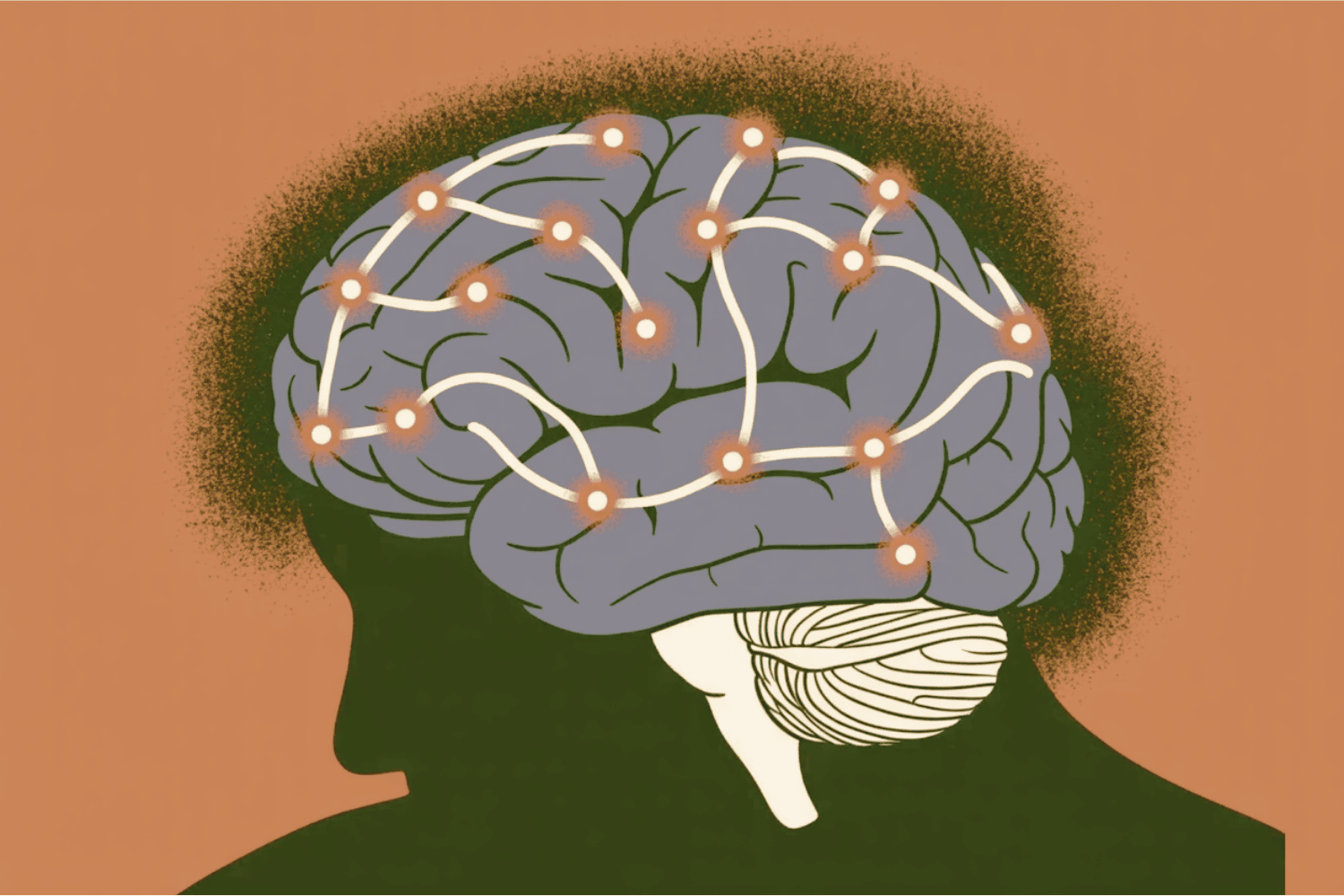How to Think Positive Thoughts

Most people misunderstand what it means to “think positive thoughts.” It’s not pretending life is perfect or denying hard feelings. It’s a mental discipline, the ability to direct attention toward what strengthens you instead of what drains you.
This isn’t about forced optimism. It’s about awareness, intention, and practice. In this article, you’ll learn how to notice your thoughts as they happen, retrain your focus using proven techniques, and understand an ancient yoga principle that aligns perfectly with modern psychology.
What Does It Mean to Think Positive Thoughts?
To think positive thoughts means to take ownership of what your mind chooses to amplify.
Every thought is a seed. Some grow into anxiety and self-doubt. Others grow into motivation and peace. You can’t stop random thoughts from appearing, but you can choose which ones to water.
Positive thinking is not wishful or naive, It’s practical. It helps you interpret situations in ways that keep you resourceful and resilient. When practiced consistently, it rewires the brain through neuroplasticity: the mind’s ability to change its own structure based on repetition.

How to Develop Presence of Mind
You can’t redirect your thoughts if you never notice them and this is a problem that a lot of us have. Awareness is the first skill to work on.
Presence of mind means catching a thought while it’s still forming, before it turns into emotion or reaction. Here are a few ways to strengthen that ability:
Micro-pauses throughout the day
Stop for five seconds several times a day and ask, What am I thinking right now? That brief check-in disrupts automatic loops and builds metacognition, awareness of your own thinking. Set an alarm if you have to.
Mindful breathing
Anchor your attention to your breath for a few minutes. This practice improves focus and helps you catch thoughts as they arise, instead of being carried by them. Create a daily routine where you sit in silence for 5 minutes, taking deep breaths in and out of the nose, first thing in the morning. Be consistent with this and it will pay off.
Journaling for observation
Write your thoughts without editing. Seeing them on paper separates you from them, giving space to respond instead of react.
Presence isn’t about controlling thoughts. It’s about noticing them soon enough to make a choice.
Why Positive Thinking Feels Unnatural at First
Your brain evolved to spot threats, not blessings.
This negativity bias made sense for survival but works against happiness. Negative thoughts appear faster and feel louder because the brain treats them as warnings. Add in years of subconscious conditioning and your inner dialogue becomes automatic. We are constantly bombarded daily with a steady stream of negativity from friends, family, media, etc. So it is a must that we take the steps to create a positive inner environment.
Knowing this changes everything. You stop taking negative thoughts personally. They’re habits, not truths. And habits can be replaced.
How to Start Thinking Positive Thoughts (Step-by-Step)
1. Awareness
Notice what’s happening inside. Catch yourself when you say, I can’t, I’m stuck, I’m failing. Don’t fight the thought. Just see it.
2. Replacement
Once you’re aware, apply what the Yoga Sutras call Pratipaksha Bhavana (II.33) — “When disturbed by negative thoughts, cultivate the opposite.” As the Bible says in Romans 12:2, “Be transformed by the renewing of your mind.” Both teachings point to the same truth, you change your life by changing the way you think. In simple terms, it means introducing a new, constructive thought when a harmful one appears.
If you think, I’m not good enough, respond with, I’m improving every day.
This is not denial, It’s re-direction.
3. Repetition
Your brain learns through consistency. Each time you redirect a thought, you’re reinforcing a new neural pathway. Repetition builds strength, and strength builds belief.
Example: Reframing a Common Negative Thought
Negative loop: “I’ll never change.”
Reframe: “I’m in the process of improving.”
That one shift matters. The first statement closes your future. The second opens it. The more often you choose empowering interpretations, the more automatic they become.
This is how mental conditioning works – through repetition, not inspiration.

Check out Daily Affirmations that actually work
Core Strategies for Positive Thinking
These are evidence-based techniques that reinforce a positive mindset over time:
- Identify negativity hotspots: Notice where your thoughts turn negative: work, relationships, body image. Start there.
- Challenge your thoughts: Ask, Is this realistic? What can I do about it? or What else could be true?
- Practice gratitude: Write or reflect on three things you appreciate daily. Gratitude shifts focus from scarcity to sufficiency.
- Visualize positive outcomes: Picture yourself succeeding or experiencing peace. The brain responds to imagery like reality.
- Use positive self-talk: Replace harsh inner dialogue with supportive language. Speak to yourself as you would to a close friend.
These techniques might sound simple, but repetition and consistency transform them into powerful tools.
Science-Backed Habits That Support Positivity
Thinking positive thoughts is easier when your body and environment support it.
- Surround yourself with positive influences: People and content shape mental tone more than you realize. Don’t engage in negative activity on social media, it’s a waste of your time and it’s jeopardizing your peace.
- Exercise, eat well, and sleep deeply: Physical health stabilizes mood and strengthens emotional resilience. Find a physical activity that you would enjoy.
- Allow all emotions: Positivity isn’t about rejecting sadness or anger. It’s about meeting them with curiosity and self-compassion.
- Make time for humor: Laughter lightens perspective, even during stress, and activates neurotransmitters that boost joy and creativity.

Neuroplasticity and Long-Term Change
Repeatedly practicing positive thinking reshapes your brain. New connections form between neurons, making optimism more automatic.
Research shows that consistent positive focus can increase serotonin, reduce cortisol, and enhance problem-solving. Over time, this builds emotional resilience and a better mood.
Positivity is not about pretending everything’s fine. It’s about training your perception so you can respond to life with clarity, confidence, and calm.
Long-Term Reprogramming
Lasting positivity requires environment and ritual.
Read, listen, and speak words that reflect who you want to become. The mind absorbs what it’s exposed to. That’s why tools like the book How to Think Positive Thoughts exist, to reinforce your mental environment through repetition and reflection.
When you build these cues into your day, you stop trying to “be positive” and start living positive.
FAQ
With steady practice, most people notice improvement in two to four weeks. Long-term reprogramming continues for months as the brain strengthens new patterns.
Yes. Studies in neuroplasticity confirm that repeated optimistic thinking builds stronger neural pathways for resilience and calm.
It helps by changing focus. Positive thinking reduces the mind’s fixation on threat, creating mental room for perspective and calm.
Final Reflection
Positive thinking isn’t a mask. It’s a method that can be learned, practiced, and improved. It doesn’t mean you ignore pain or pretend life is easy. It means you decide how to interpret what happens and choose responses that serve growth. When you train your perception, your life begins to reflect that clarity back to you.
